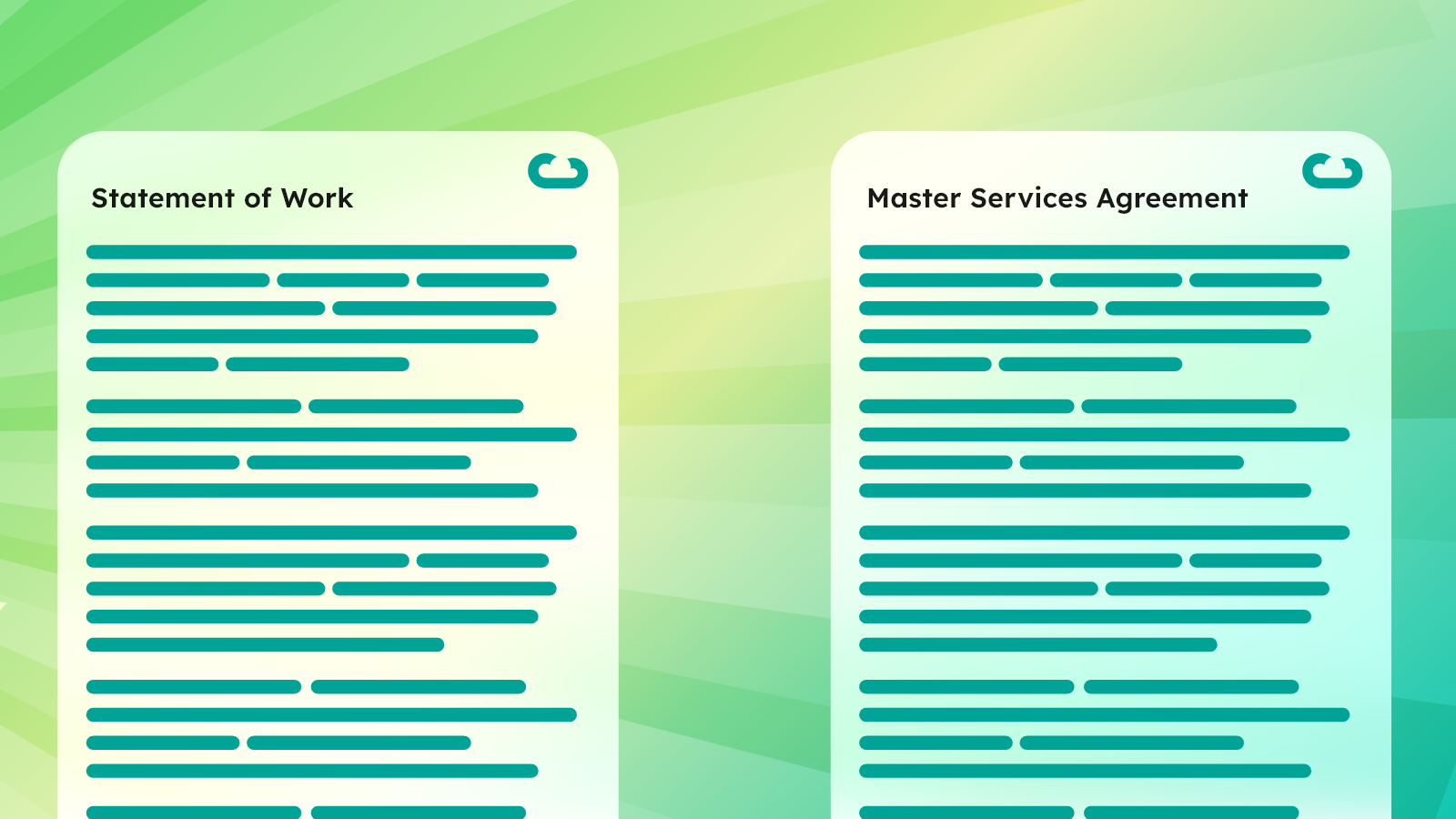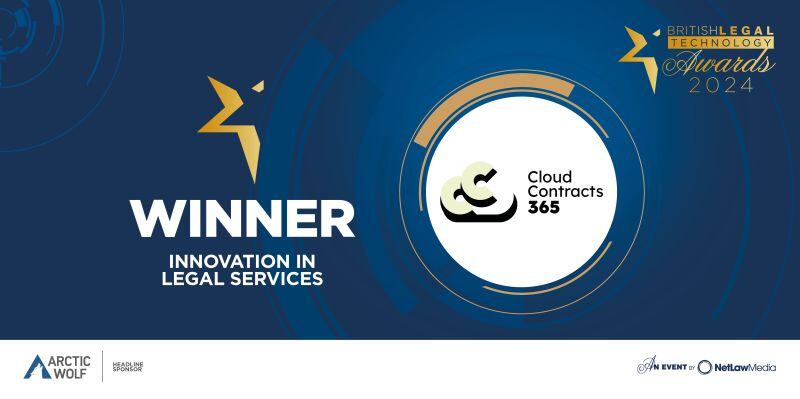Master Services Agreement (MSA) vs Statement of Work (SOW): What Are They And Do I Need Them?
Fostering successful collaborations between vendors, clients and contractors is imperative for sustained growth. Two of the most common and important contracts in the tech sector are the Master Service Agreement (MSA) and the Statement of Work (SOW). Skilfully intertwining these contractual tools can streamline processes, enhance clarity, and facilitate seamless partnerships.
What is a Master Services Agreement?
At the core of any long-term business relationship lies the Master Service Agreement (MSA). Think of the MSA as the architectural blueprint outlining the broad terms and conditions governing the partnership between two or more entities. Unlike detailed contracts specifying particular products or services, the MSA establishes the groundwork for a long-term collaboration.
The MSA serves as a flexible framework, providing a comprehensive view of the relationship, addressing crucial aspects such as confidentiality, intellectual property rights, dispute resolution mechanisms, payment terms, warranties, and more. By establishing a robust legal foundation, the MSA lays the groundwork for future transactions, eliminating the need for repetitive negotiations.
What is a Statement of Work?
Complementing the MSA, the Statement of Work (SOW) delves into the specifics of individual projects within the overarching collaboration. The SOW is your detailed roadmap, specifying the scope of work, deliverables, timelines, and project-specific obligations. While the MSA creates the landscape, the SOW charts the course for each unique project.
When engaging external parties, an SOW becomes a vital tool. It acts as a project management document, ensuring a crystal-clear understanding of project goals, tasks, and expectations. This level of detail minimises ambiguity, enhancing the likelihood of successful project completion.
MSA and SOW: A Powerful Combination
The true power of these contractual tools emerges when MSA and SOW work in harmony. Here's how the symbiotic relationship between the two documents work:
Establishing Clarity from the Outset
An effective MSA explicitly references the use of SOWs, creating a seamless connection between the two. This sets the tone for transparent collaboration, making it evident that the parties will utilise SOWs to delineate project-specific details.
Building a Robust MSA/SOW Template
Crafting a well-structured MSA/SOW template is a foundational step. Whether created in-house, with legal expertise, or sourced from reputable associations, having a solid contract template streamlines the process. Numbering each SOW for easy reference and attaching explicit references in both documents foster consistency.
Defining Roles and Responsibilities
While the MSA outlines overarching responsibilities and legal terms, the SOW dives into granular details. Clearly defining each party's obligations, payment terms, delivery schedules, and other project-specific nuances within the SOW ensures everyone is on the same page.
Navigating Termination Clauses
Termination rights are a critical aspect of any agreement. The MSA should explicitly detail how termination will be handled, whether it's termination of a specific SOW or the entire collaboration. This clarity minimises uncertainties in case termination becomes necessary.
Master Services Agreement: Main Terms
- Confidentiality: Clearly define how sensitive information will be handled and protected by all parties involved.
- Intellectual Property Rights: Outline how intellectual property rights, including ownership of deliverables, will be managed and maintained.
- Dispute Resolution: Clearly articulate the mechanisms for resolving disputes, ensuring a fair and efficient process.
- Geography: Specify the location where the work will be performed, addressing potential implications for taxes and legal jurisdiction.
- Payment Terms: Define how payments will be made, including the schedule and any penalties for late payments.
- Warranty: Specify the warranties each party provides in the business relationship, ensuring accountability.
- Governing Law and Jurisdiction: This section clarifies the legal framework that governs the agreement and identifies the appropriate forum for dispute resolution.
- Limitations of Liability: Define the responsibilities for lawsuits and liability in connection with the project.
- Work Standards: Address acceptable work standards and mechanisms for resolving issues related to the work.
Statement of Work: Main Terms
- Summary: Provide an overview of the project, its goals, and expectations.
- Approval: Outline the criteria for project evaluation, approval processes, and procedures for requesting revisions.
- Work Breakdown Structure: Detail each task and phase of the project, specifying how tasks will be completed.
- Deliverables : Clearly describe the final product to be delivered, including specific details relevant to the project.
- Schedule: Define the project timeline, including milestones, deadlines, and other essential dates.
- Cost: Estimate the project cost, detailing how reimbursement for project expenses will be handled.
- Work Requirements: Specify any tools, equipment, or skills required to complete the project successfully.
Resolving Conflicts: MSA vs. SOW
While the synergy between MSA and SOW is key, conflicts may arise, particularly in overlapping terms. In such instances, it's crucial to establish beforehand which document will supersede the other. Generally, the SOW, takes precedence. However, the specifics of each conflict and the agreements in place should be considered, potentially requiring legal consultation for resolution.
Conclusion: Orchestrating Seamless Collaborations
To sum up, the synergy between MSA and SOW is a game-changer for fostering successful business collaborations. The MSA sets the stage by establishing a comprehensive framework, while the SOW takes the spotlight in detailing project-specific details. Together, they form a powerful duo, paving the way for clarity, efficiency, and successful long-term partnerships
Tech-Powered Efficiency: Cloud Contracts 365
Technology can now play pivotal role in enhancing efficiency in the contracting process. Contract management software, such as Cloud Contracts 365, can revolutionise the handling of contract creation, review and execution. Offering best-in-class contract templates designed specifically for tech businesses (our MSA is the most comprehensive you will find out there!), and features like simple and intuitive contract creation tools, AI-powered contract analysis, e-signatures and free centralised document storage…. these tools standardise and streamline the process, provide valuable insights to reduce legal risk, and ultimately speed up the sales cycle. Try for free today!




























.png?width=1749&height=1743&name=NBWA%202024%20-%20Silver%20Winner%20(1).png)
.jpg?width=800&height=906&name=1725363000656%20(1).jpg)